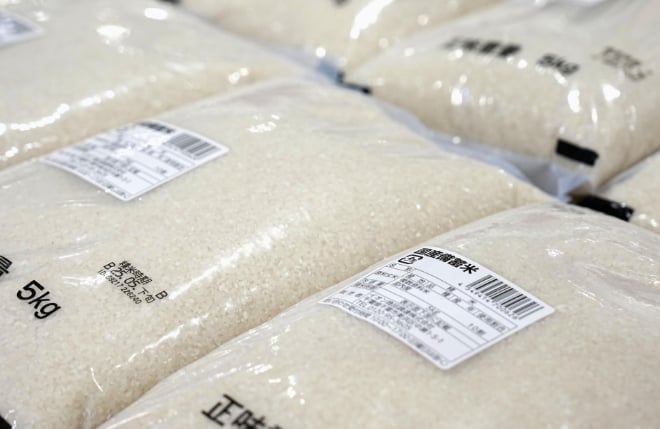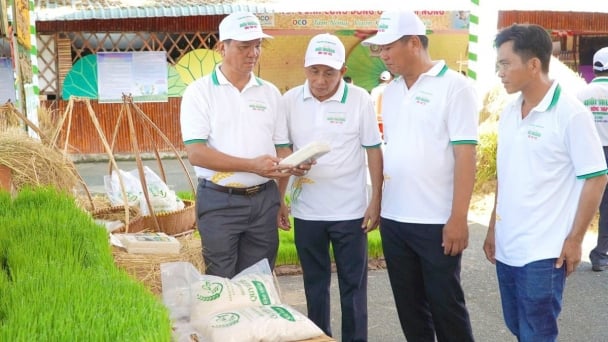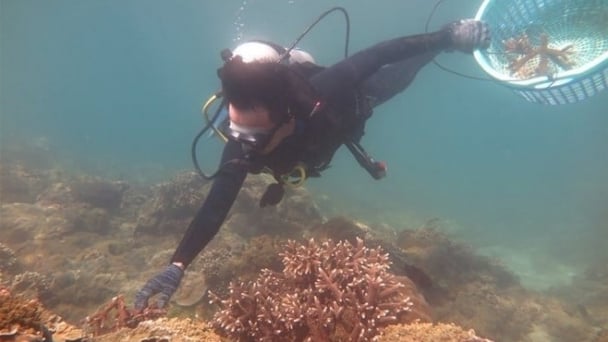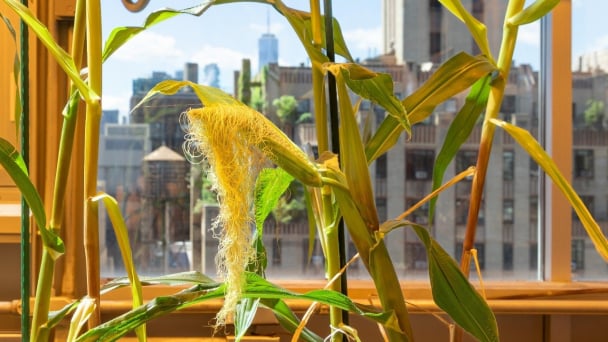June 11, 2025 | 00:04 GMT +7
June 11, 2025 | 00:04 GMT +7
Hotline: 0913.378.918
June 11, 2025 | 00:04 GMT +7
Hotline: 0913.378.918

Bags of reserve rice released from government stockpiles through direct contracts with retailers hit the shelves at an Aeon supermarket in the western Japan city of Osaka on June 2, 2025. Photo: Kyodo.
As households increasingly complain about rice prices that have doubled over the past year, more than 40 percent of respondents worried that consumers may start shunning the product.
The survey, conducted for a week from May 12 and targeting 188 companies producing rice for staple food purposes, comes as the government grapples with bringing down the price that averages 4,200 yen ($29) per 5 kilograms.
In late May, the government took the unusual step of starting to sell rice stockpiles through direct sales contracts with retailers in a bid to curb prices.
Kazushi Saito, head of the association, said he believes that the price tag deemed reasonable for both producers and consumers is 3,000 yen per 5 kg.
According to the survey, 53.7 percent of respondents said the consumer purchasing price of the 2024 harvest is "too high," followed by 30.9 percent who considered the price "high, but appropriate."
Forging a consensus on the appropriate price level may prove difficult, however, with Toru Yamano, the head of the powerful farm lobbying group, Central Union of Agricultural Cooperatives, saying in May, "I don't necessarily think it's high."
In a multiple-choice question asking farm companies' concerns in the rice-growing business, 77.1 percent -- the largest group of respondents -- pointed to the high costs of purchasing facilities and machines for farming, while 55.3 percent worried about a sharp fall in rice price following overproduction.
A total of 43.1 percent expressed fear that consumers could stop buying rice because of the soaring price.
KyodoNews

(VAN) Dong Thap has launched a meeting in response to the Action Month for the Environment under the theme 'Live Green - Join Hands for a Green Economy' at Tram Chim National Park.

(VAN) The ocean has the capacity to absorb millions of tons of carbon, provided that mangrove forests, coral reefs, and biodiversity are protected.

(VAN) Technology is redrawing the map of Vietnamese aquaculture: more modern, greener, and more sustainable.

(VAN) Novel process harnesses machine learning to reveal groups of genes that determine how efficiently plants use nitrogen.

(VAN) Several scientists and farmers are experimenting with soil treatment in some key durian-growing regions such as Cai Lay (Tien Giang), Dak Song, Gia Nghia, and Dak R’lap (Dak Nong).
/2025/05/25/4127-3-073637_820.jpg)
(VAN) Thanks to the promotion from an FAO-implemented project, vegetable production in greenhouses in Moc Chau has seen strong development, from 1.5 hectares in 2021 to nearly 50 hectares in 2024.